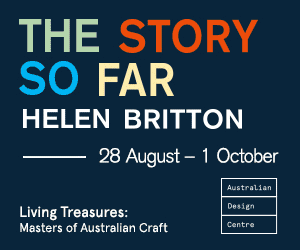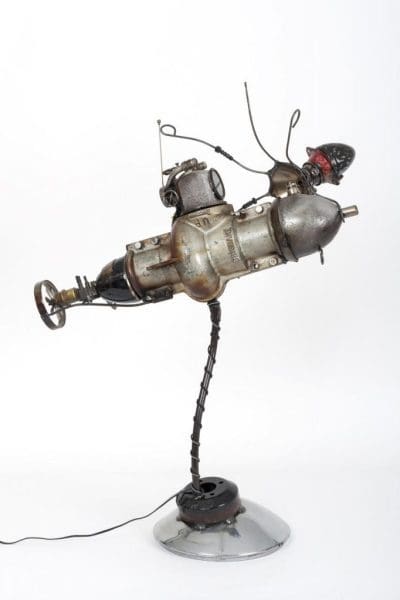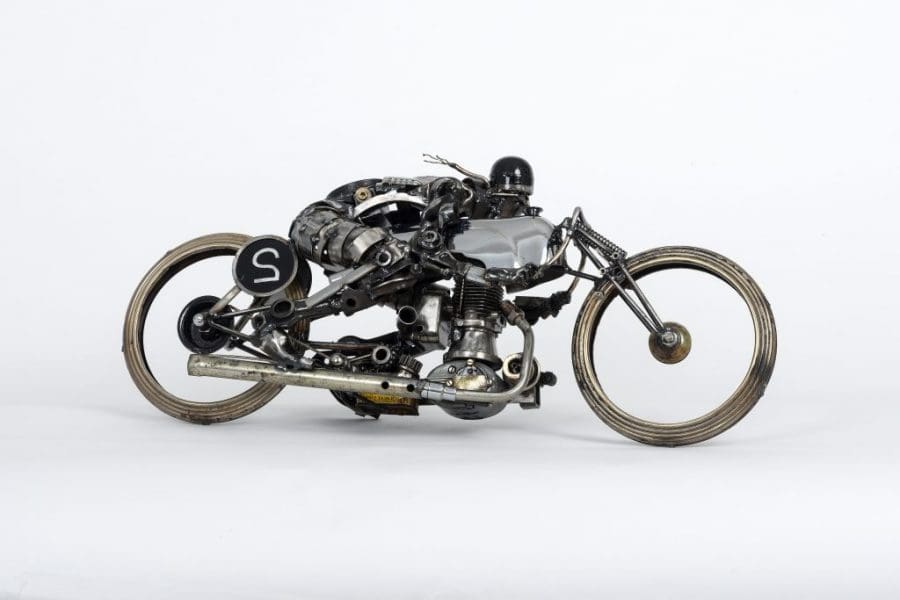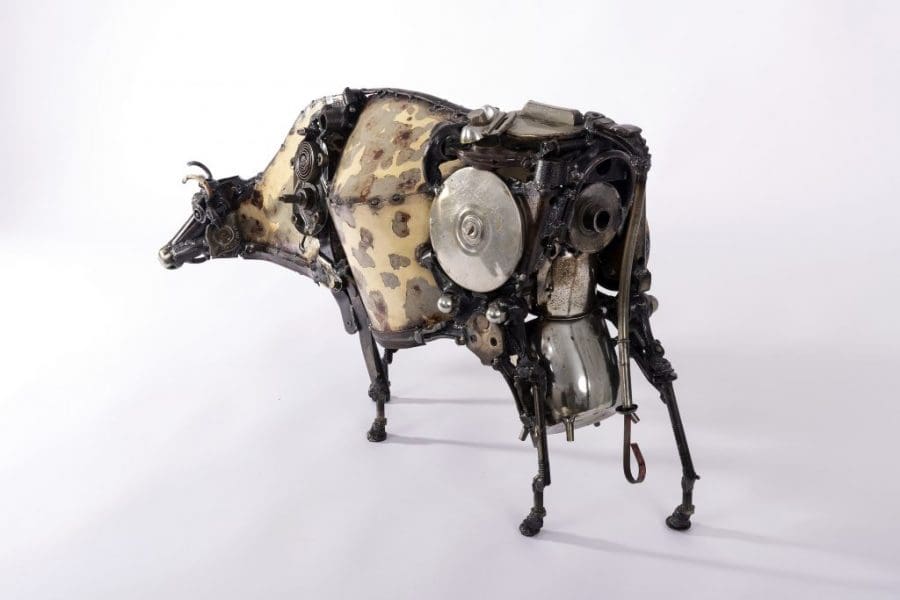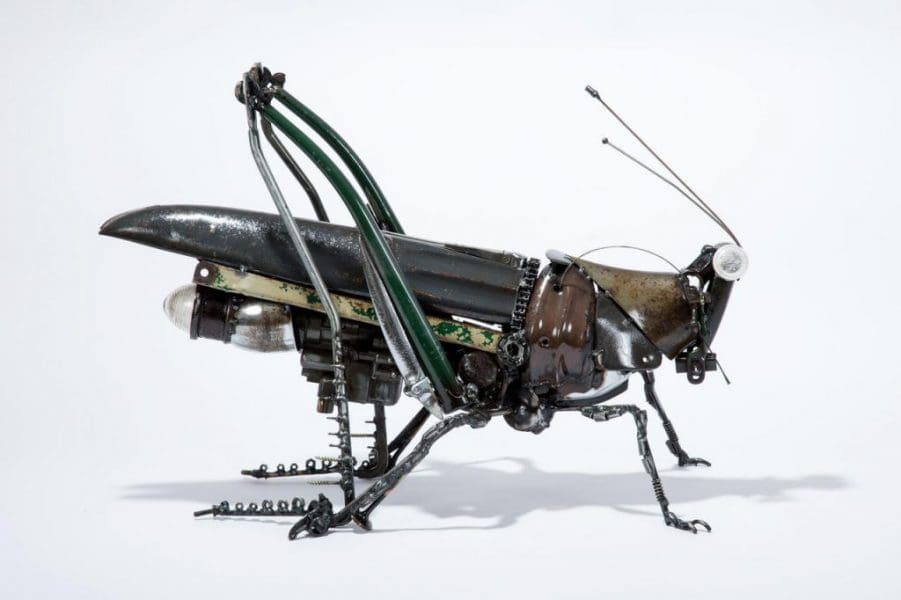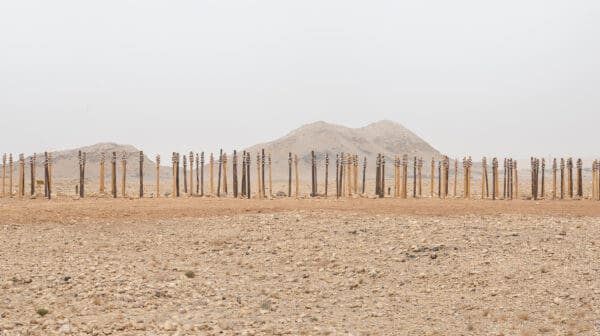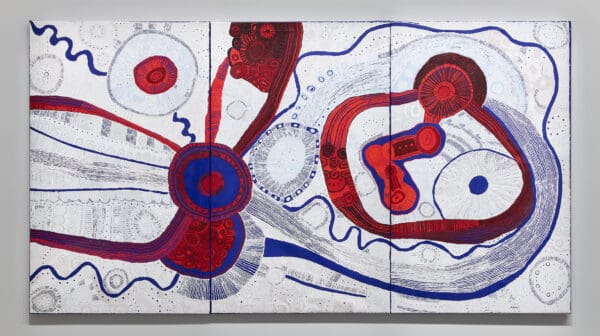When driving through country towns, Brisbane-based artist James Corbett looks out for bric-a-brac shops to scavenge for materials to create his works which consist predominantly of automotive scraps that come together to form figures, insects, animals and cars. “I like to see the materials in person. I go to flea markets, jumbles and scrapyards. Wherever I think there will be a pile of stuff I’ll go have a sticky beak,” he says.
Corbett’s art making began 20 years ago on the grounds of his former car-wrecking business. A customer, who he had supplied car parts to for a charity rally, passed on his winning trophy. “It was made up of car parts welded together, and I thought ‘I can do better than that’.” Corbett began making his own sculptures from car scraps which he displayed on his desk. Positive responses encouraged him to continue and an art practice was born.
Although car parts still form the foundation of his pieces, in the past couple of years they have begun to include other found materials: a sculpture of a goat has a body of a cello that Corbett received sans neck from a violin repair shop in Sydney.
And other materials include a leather jacket, ice skates and a polished tin. “I like the patina of old stuff and that there’s a history to them. People have somehow had connections with the objects. You can never know their story, but I wish I could,” he says. “How many people used those ice skates before I picked them up in Amsterdam?.” The integrity of the objects is maintained when welded together. “I work on the principle that anyone who knows what the part of the work is can still recognise it,” Corbett explains.
Viewing his works as both components and their sum is how Corbett conceives of them. “I think my work has similarities with the Impressionists. When you look at their paintings close up you see they are made from dabs of colour. They don’t look like a painting, they look like dabs of colour. But when you stand back it’s a beautiful painting,” he says. “My works are like that, but they’re made of different materials instead of paint and each thing is an object in its own right. But when you look at it from afar it looks like a completely different entity.”
The relationship between the machine (such as the car) and the body has featured throughout the history of art: the Futurists celebrated it, while Frankenstein and later films and novels casts it as horror.
Meanwhile, Corbett’s works seem to both pay homage to his materials and their history while containing a quaintness. They appear as large-scale animated collectable trinkets with an alive quality. “The challenge is to create the allusion of movement and life,” says Corbett. “I feel I’ve done a good sculpture if it looks like it could move; it’s alive and has personality.”
James Corbett: Mechanically Challenged
Linton & Kay Galleries Subiaco
8 –23 February


